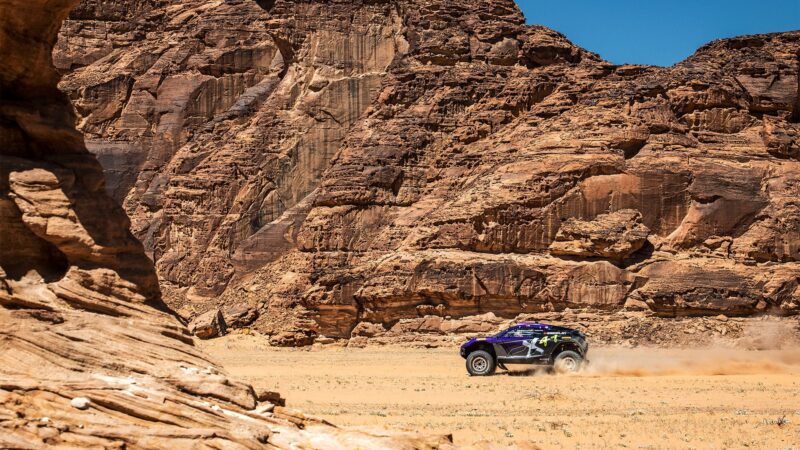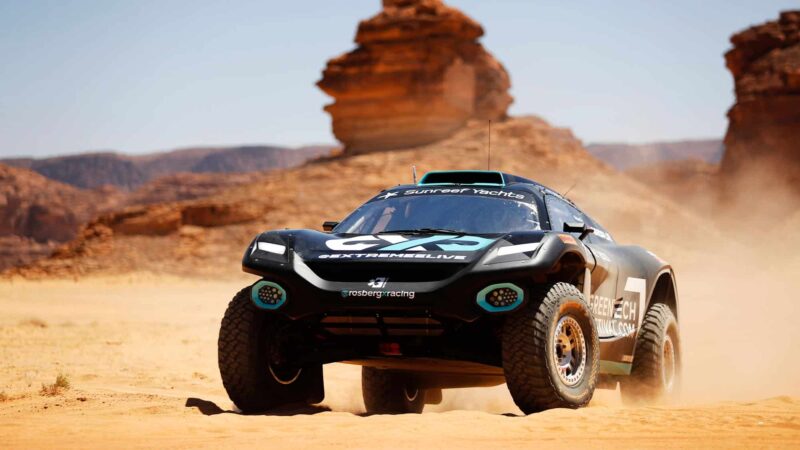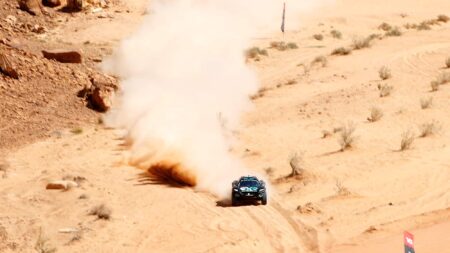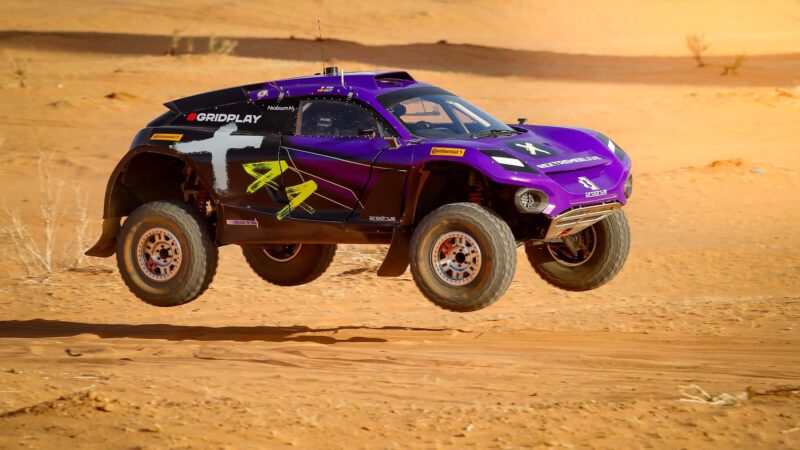The times set in qualifying would decide who went into two three-car semi-finals and a ‘shootout’ race for the bottom three cars (nine teams were entered in total)
The format was exciting in the main and worked for the most part. The action was close at the front and there was drama further back as Stéphane Sarrazin and Claudia Hürtgen suffered huge shunts in qualifying, showing both the course and speed of the car were not to be underestimated.
Slight confusion occurred due to a lack of split times as the one-car heats were conducted, so viewers couldn’t track the progress of stages as they were happening. However, the time deficits did appear on the second lap.
To be fair to Agag and co, they weren’t planning for a time-trial, so managed to do a good job conveying what was going on in the racing action considering. It also acted as a decent way to get viewers used to what the cars looked like when running and who the different teams were before the frenetic racing started.
The organisational improvisation was well-judged. EE managed to do things safely without compromising the entertainment too much, all the while having no idea how the action would really shake out – that in itself is almost miraculous.
Unfortunately, the semi-finals and final were fairly anticlimactic. The sheer amount of dust thrown up by the cars meant that once the charge down to Turn Three had occurred, the race was pretty much settled. From there, the leader had a clear view whilst the second and third place cars had almost zero visibility, forcing them to back off. The racing up to the first three corners showed you just how good Extreme E has the potential to be.
In both the semi-final and the final, Rosberg X Racing’s Johan Kristoffersson demonstrated exactly why he’s a three-time world rallycross champion. The Swede took a wide entry into the third turn in both races, using the switchback to nip into the lead and dominate from there.
Kristoffersson himself commented: “The race is over after Turn Three.”
The one-car heat and then reduced-field racing was probably the best compromise in the circumstances. The excitement of a new series made up for lack of racing, but organisers will have to have a contingency plan next time.

Stunning scenery – but was it right to start a new series promoting gender equality in a country seemingly not interested in women’s rights?
Extreme E
The draconian penalties handed out to Button and Rosberg teams for pitlane speeding could also do with a review, considering both cars’ pitlane limiter software failed in the events. Penalising them, and to such a degree, blunted the competitive edge and seemed self-defeating.
Crucially, all of these criticisms can be solved, and there are already plenty of positives.
Electric cars can come across as a bit soulless, but that doesn’t seem to be a problem for the Odyssey 21 – much to Extreme E and manufacturer Spark’s credit.
True, we’ll probably never fall in love with the whine of the electric motor but these machines bucked, jumped and slid over the sand and rocks in the unforgiving desert in thrilling fashion, whilst being fast too – you could really see that 550bhp being put down.
This was visceral, high-speed motorsport. In comparison, Formula E races sometimes give the impression of a collection of Hotpoint irons duelling it out in a destruction derby in downtown Berne. It even compared favourably to the mainstream WRC and rallycross series.



